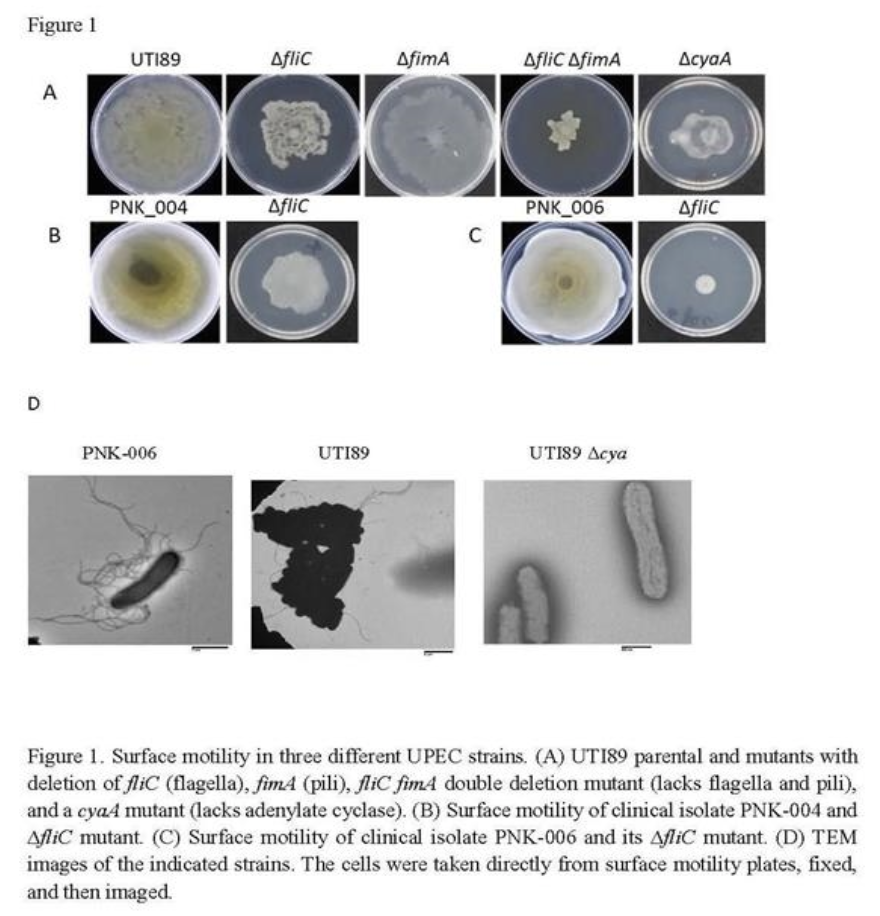The authors characterized the model UPEC strain UTI89, and two clinical isolates from women with recurrent urinary tract infections (UTIs), PNK-004, and PNK-006. Swimming motility was assessed in plates with glucose, tryptone, and 0.25% agar, while surface motility was assessed on plates with the same medium but with 0.45% agar. Mutants with deletions of specific genes were constructed using phage P1 transduction using marked genes from the Keio collection of E. coli mutants. Cells from surface motility plates were collected, fixed with glutaraldehyde, absorbed on carbon-coated copper grids, stained with phosphotungstic acid, and viewed on a JEOL 1200 EX transmission electron microscope.
The authors found that all strains showed swimming motility that required flagella, but unexpectedly glucose did not prevent swimming. Surface motility characteristics were strain-dependent. For UTI89 (Fig 1A, D), loss of flagella (ΔfliC) impaired motility and the residual motility required pili (ΔfimA). Loss of adenylate cyclase (Δcya) resulted in an unusual pattern of movement, and electron microscopy indicated a lack of flagella and pili which suggests an appendage-independent form of motility. For PNK-004 (fig 1B), loss of flagella modestly impaired movement, and electron microscopy showed the absence of an appendage. For PNK-006 (Fig 1C, D), the loss of flagella eliminated surface motility.

UPEC strains have at least four forms of motility, including a novel appendage-independent form of motility. The motility types show variations between strains. The relevance of each motility type to UTIs is unknown. Glucose-insensitive flagella synthesis distinguishes UPEC from nonpathogenic strains, and because cyclic-AMP is a major regulator of metabolism, these results indicate unsuspected aspects of UPEC metabolism.
Presented by: Jacob Hogins, BS1, Sankalya Ambagaspitiye, Ph.D.1, Philippe E. Zimmern, MD; PI2, Larry Reitzer, Ph.D.; PI1
1. Department of Biological Sciences, The University of Texas at Dallas
2. Urology Department, The University of Texas Southwestern Medical Center, Dallas, Texas
Written by: Bilal Farhan, MD, Assistant Professor, Division of Urology, University of Texas, Medical Branch, Texas; @BilalfarhanMD, at the Society of Urodynamics, Female Pelvic Medicine & Urogenital Reconstruction Winter Meeting, SUFU 2020, February 25 - 29, 2020, Scottsdale, AZ


